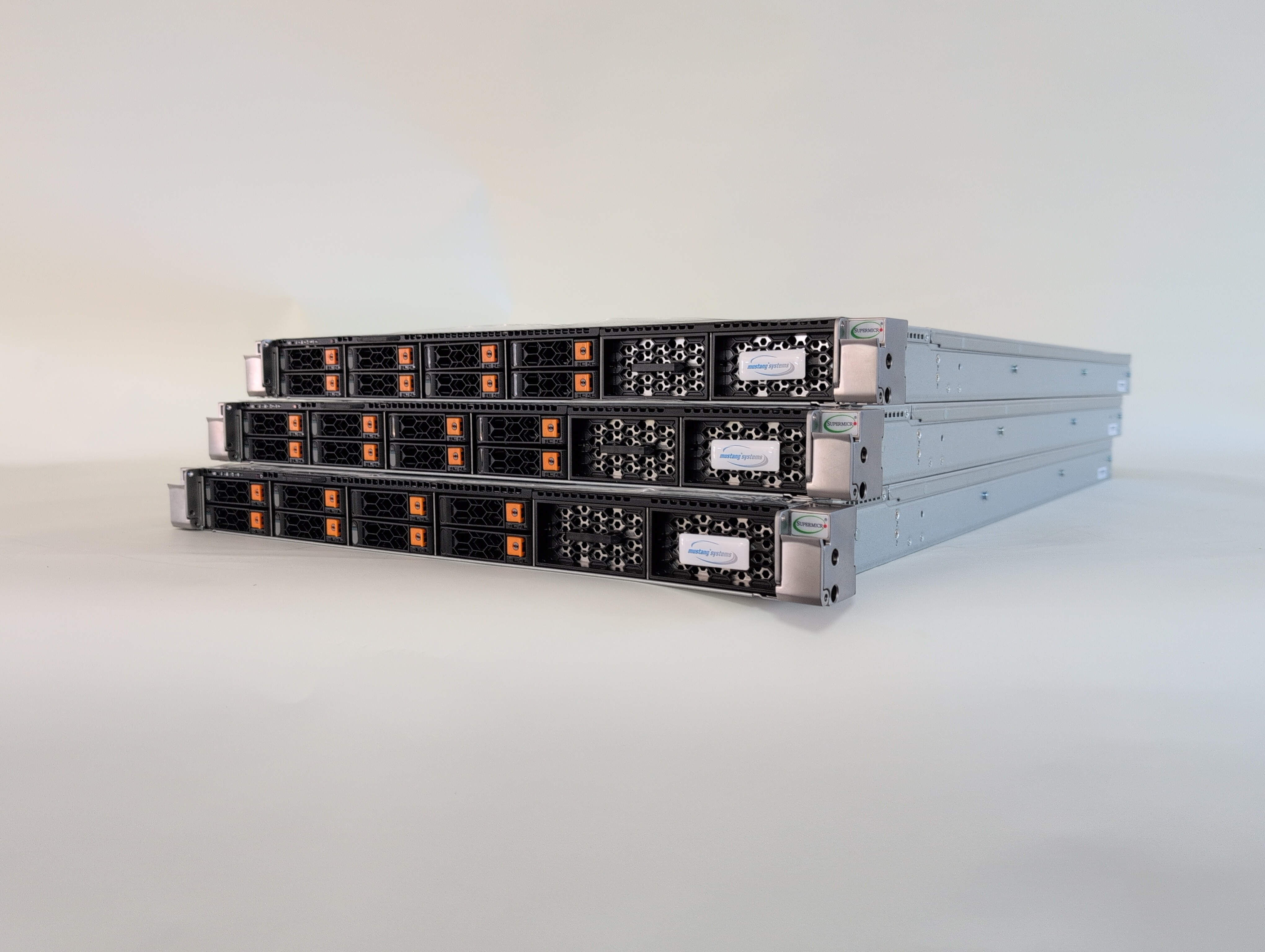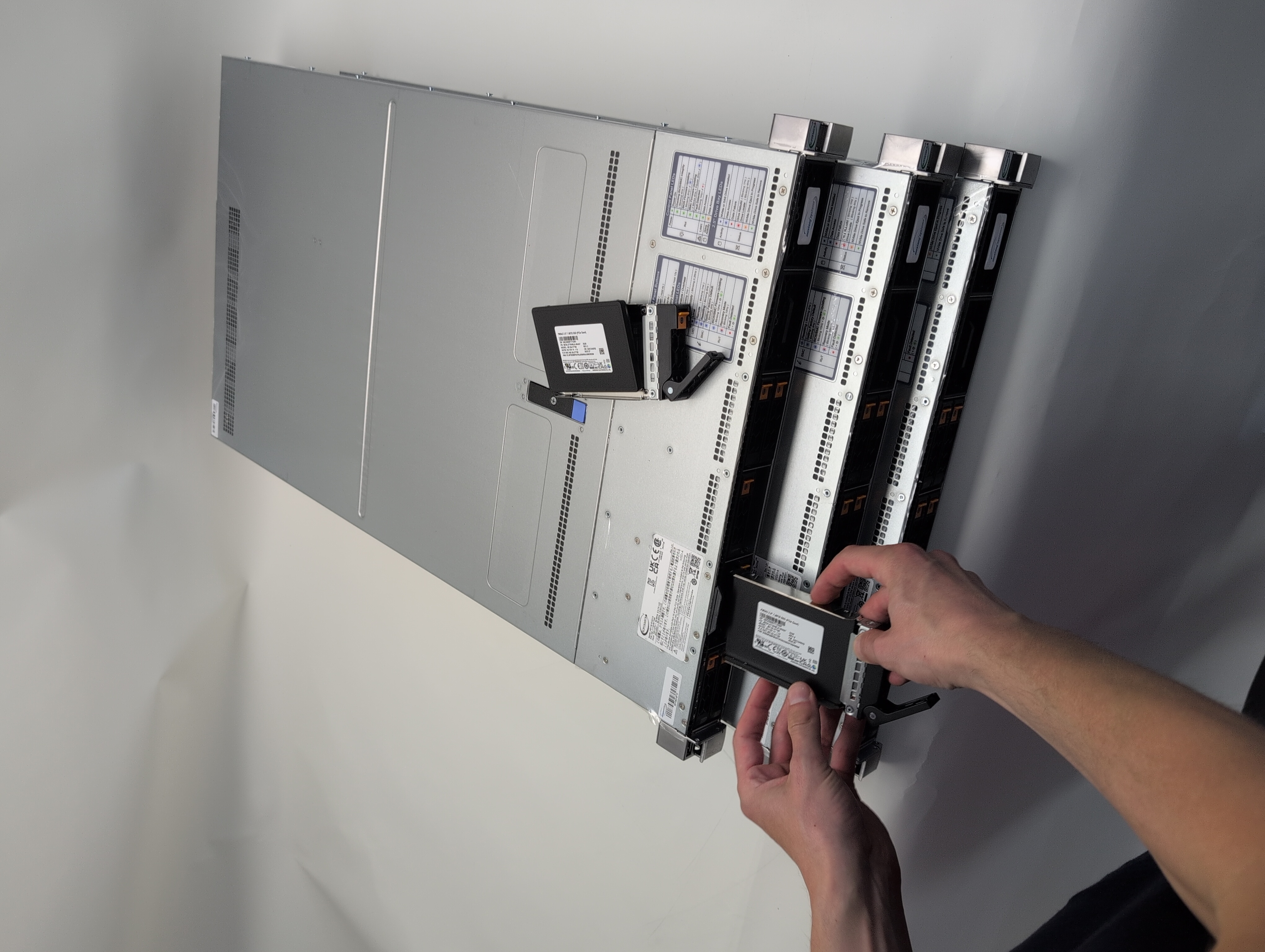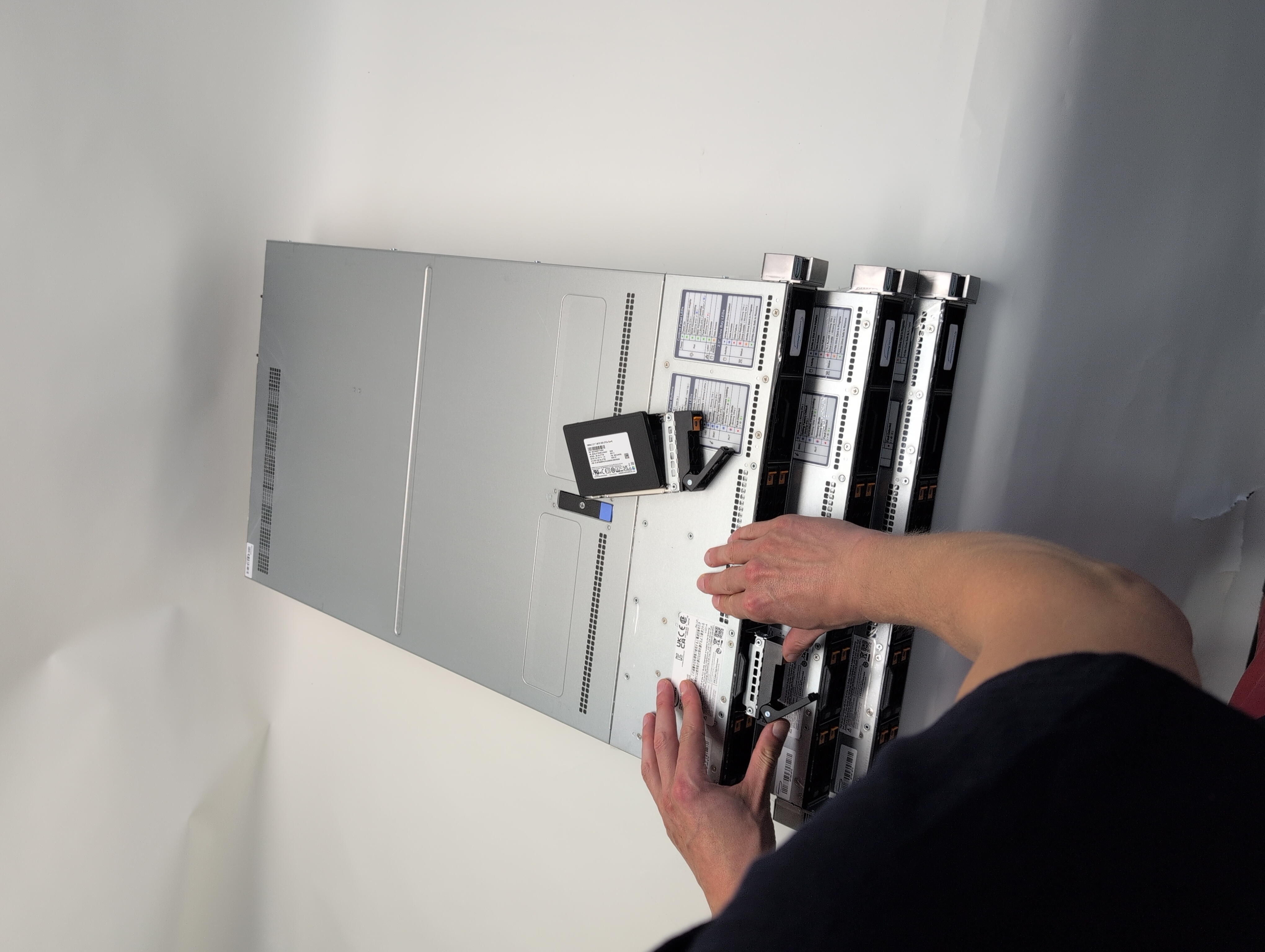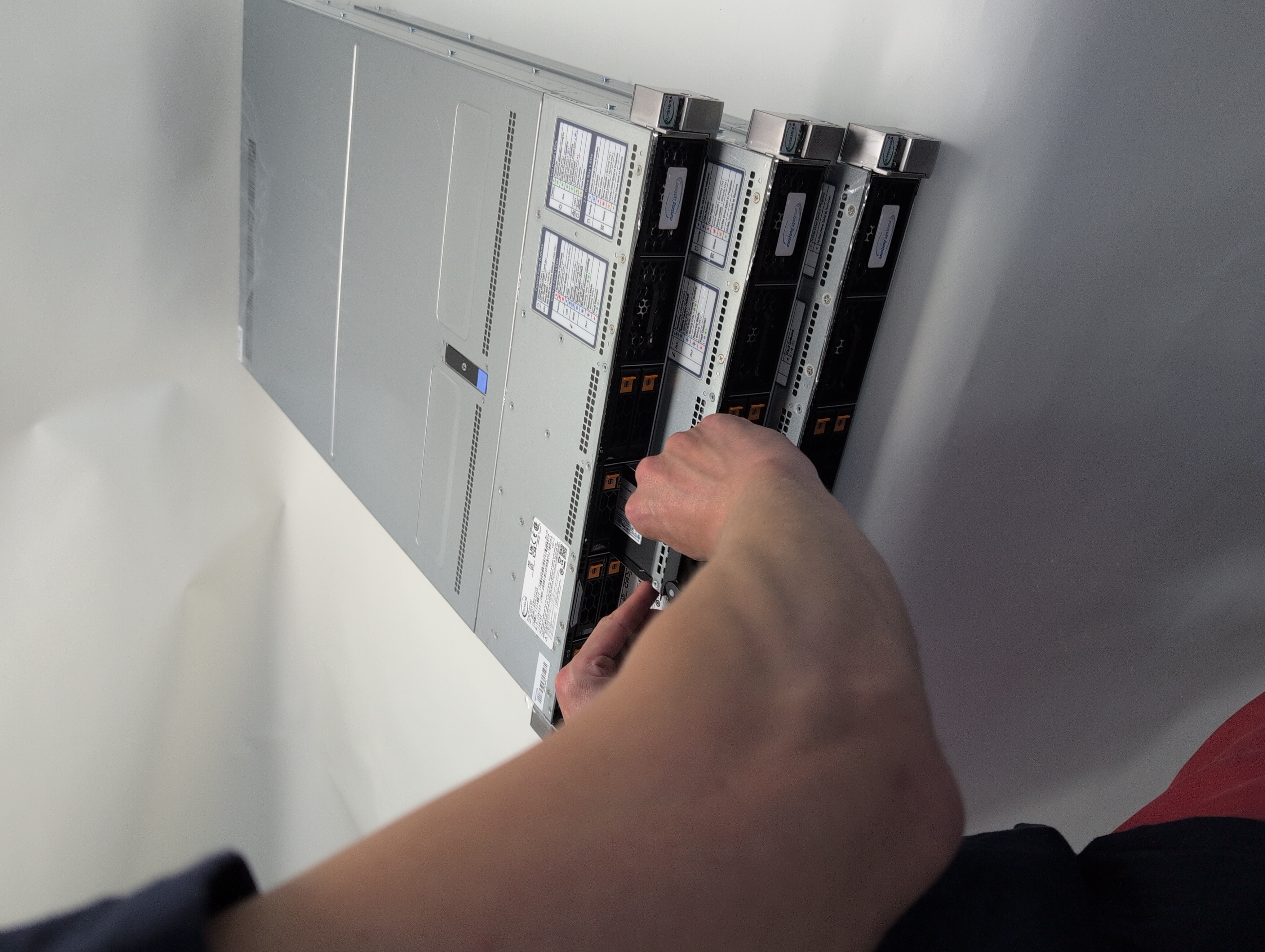
The end customer in this project is a German research institute for communication and information processing that focuses on the development and analysis of complex information systems. The institute concentrates on topics such as data analysis, information fusion, artificial intelligence, and secure communication architectures.
This research generates enormous data streams – for example, from sensor networks, communication signals, or simulation environments. These must be processed, correlated, and evaluated in real time or near real time. This requires systems that combine high computing power with low latency and consistent I/O performance.
The institute operates several HPC clusters and develops its own analysis methods for synchronizing and interpreting large amounts of data from a wide variety of sources. These methods are both CPU- and I/O-intensive and benefit from an architecture that allows many parallel processes with very fast memory access – this is exactly where the new all-flash compute environment comes in.
Project period: Q3/2025
Table of Contents
Project Description
The aim of the project was to develop a scalable all-flash NVMe infrastructure as a compute node extension within an existing HPC environment. In contrast to classic compute nodes, which work with mixed SATA or SAS storage, this generation was to rely consistently on NVMe technology in order to create a new performance basis for data-driven applications.
Specifically, the systems were to:
- process parallel data streams from communication and sensor systems at high frequency,
- accelerate analysis algorithms and AI models with high memory and I/O requirements,
- and at the same time serve as a flexible development platform for new software modules that can later be scaled to larger clusters.
Since communication research often involves calculating a large number of small, simultaneous processes (e.g., signal transformations, clustering, pattern recognition), an architecture was needed that combines many threads, high memory bandwidth, and fast data throughput.
The decision was therefore made to use AMD EPYC 9555P processors from the new 9005 series with 64 cores and 128 threads. In conjunction with DDR5-6400 ECC RAM and a consistent all-flash approach using Samsung PM9A3 NVMe drives, a system design was created that enables maximum parallelism with minimum latency.
The three systems were designed as standalone compute nodes that are redundantly integrated into the existing cluster via 10 GbE and 10 Gb SFP+. This allows them to perform both isolated experiments (e.g., software tests, algorithm evaluations) and productive analysis jobs in the HPC cluster.
Compared to the previous server generation—some of which still use SATA SSDs and DDR4 memory—the new platform enables up to five times higher I/O performance and significantly shorter computation times while maintaining the same energy efficiency.

Project Implementation
- Server platform
3× Supermicro A+ Server 1115HS-TNR (Hyper Series, 1U)
→ Compact HPC platform with PCIe 5.0, redundant 800/1200 W Titanium power supply, and eight hot-swap NVMe bays. Designed for maximum density and I/O performance in data-intensive analysis and AI environments. - Processors (1 per server)
3× AMD EPYC 9555P (64 cores / 128 threads, 3.20 GHz base, 4.40 GHz turbo, TDP 360 W)
→ AMD EPYC 9005 series ("Bergamo") processor with 12-channel DDR5 support and PCIe 5.0 x128. Delivers extreme parallel performance and high memory bandwidth for data- and thread-intensive research applications. - Memory (16 × 64 GB per server)
48× Samsung DDR5-6400 ECC reg. DR (CL52, 1.1 V) – 1 TB RAM per node
→ High-performance DDR5 memory with ECC error correction for maximum stability during long-running computing processes. The high clock frequency of 6,400 MT/s ensures optimal connectivity with the EPYC architecture. - System storage (2 per server)
6× Samsung PM9A3 M.2 NVMe SSD (960 GB, PCIe Gen 4 x4, up to 5,000 MB/s read)
→ Reliable, power failure-proof system drives with power loss protection and AES-XTS encryption. Ideal for boot partitions, temporary data, and Linux-based cluster installations. - Data storage (3 × 3.84 TB + 2 × 7.68 TB per server)
9× Samsung PM9A3 U.2 NVMe SSD (3.84 TB)
6× Samsung PM9A3 U.2 NVMe SSD (7.68 TB)
→ Fully NVMe-based all-flash storage with up to 6,800 MB/s read and 4,000 MB/s write speeds. Offers extremely low latency and high IOPS performance for parallel data analysis, AI models, and communication workloads. - Network (10 GbE multi-port)
Per server: 1× Supermicro AOC-ATG-i2SM (2 × 10 GbE SFP+) + 1× AOC-STGF-I2S (2 × 10 GbE SFP+) + 1× AOC-STG-I4S (4 × 10 GbE SFP+)
→ Up to 8 SFP+ ports per node for redundant data and management paths – ideal for cluster connectivity with high flexibility. - Assembly & testing
Pre-assembly and certification according to ISO 9001:2015 / ESD IEC 61340-5-1
System validation under Linux and Windows Server 2022/2025
Performance and burn-in testing with NVMe performance protocol
→ Fully tested, turnkey compute nodes with documented NVMe I/O performance and thermal stability under continuous load. - Service level
3-year parts warranty (SLA 1/3, 5×9 service) incl. MUSTANG® systems ticket support



Result
With the new all-flash compute environment, the research institute now has a high-performance, future-proof computing platform that is specifically designed for data- and thread-intensive communication and analysis processes.
The combination of AMD EPYC 9555P processors, Samsung DDR5-6400 ECC RAM, and Samsung PM9A3 NVMe storage throughout enables exceptionally high parallelism with minimal latency. The new architecture delivers significant performance gains over the previous infrastructure, particularly for applications that continuously process large amounts of data in real time, such as signal processing, pattern recognition, or AI-based information fusion.
By completely eliminating mechanical drives and switching to a pure NVMe design, access times have been drastically reduced and data rates increased many times over. At the same time, the high energy efficiency of the EPYC 9005 architecture in combination with the PM9A3 drives ensures permanently stable, thermally balanced operation – even under continuous load.
The systems can be seamlessly integrated into existing cluster and management environments and will serve as the basis for new computing methods in the field of communications analysis and AI-supported information processing. This has created a powerful, scalable, and energy-efficient infrastructure that supports both research and development and enables future expansion of the cluster without any problems.